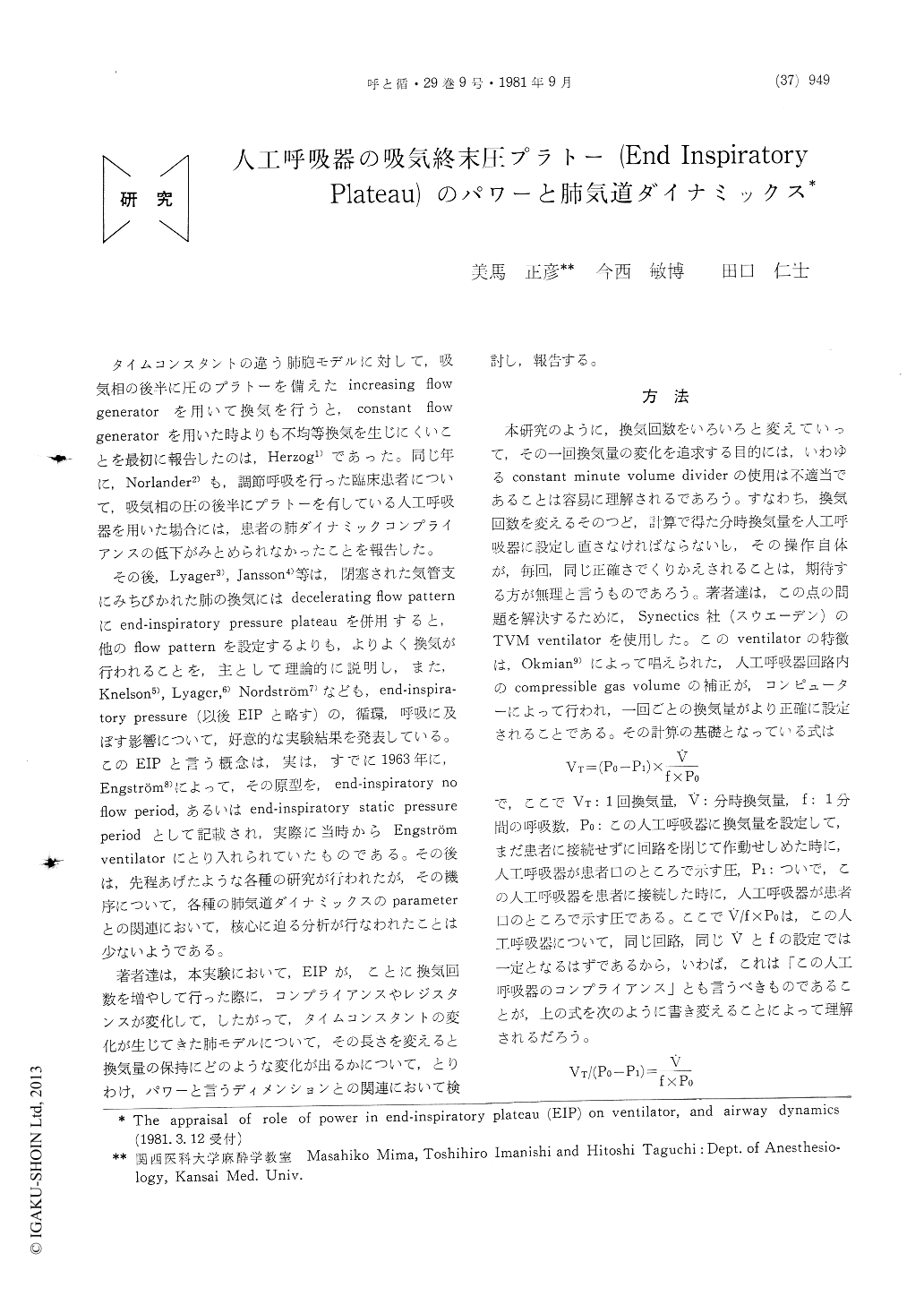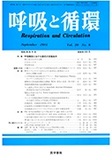Japanese
English
- 有料閲覧
- Abstract 文献概要
- 1ページ目 Look Inside
タイムコンスタントの違う肺胞モデルに対して,吸気相の後半に圧のプラトーを備えたincreasing flowgeneratorを用いて換気を行うと,constant flowgeneratorを用いた時よりも不均等換気を生じにくいことを最初に報告したのは,Herzog1)であった。同じ年に,Norlander2)も,調節呼吸を行った臨床患者について,吸気相の圧の後半にプラトーを有している人工呼吸器を用いた場合には,患者の肺ダイナミックコンプライアンスの低下がみとめられなかったことを報告した。
その後,Lyager3),Jansson4)等は,閉塞された気管支にみちびかれた肺の換気にはdecelerating flow patternにend-inspiratory pressure plateauを併用すると,他のflow patternを設定するよりも,よりよく換気が行われることを,主として理論的に説明し,また,Knelson5),Lyager,6)Nordström7)なども,end-inspira—tory pressure (以後EIPと略す)の,循環 呼吸に及ぼす影響について,好意的な実験結果を発表している。
Two types of ventilations with end-inspiratory-plateau duration time of 30%, and 50% of total inspiratory phase were investigated under venti-latory frequency of 20, 30, 40, 50 and 60 per minute respectively with model lung on ventila-tor. Ventilatory pressure, flow, volume and several other additives necessary to calculate air-way resistance, compliance and time constant were measured simultaneously through ventilatory cycles. Ventilatory volume was observed to decrease by 9%, 8%, and 8% on ventilatory frequency of 40, 50, and 60 per minute respective-ly, with EIP 30%, and by 6% on ventilatory frequency of 60 per minute with EIP 50% while ventilatory power showed parallel increment during ventilation in order of augmented ventila-tory frequencies with both EIP 30% and EIP 50%, indicating better preservation of power with EIP 50% than EIP 30% under ventilatory frequency of 40, 50, and 60 per minute where there was elevated airway resistance or prolong-ed time constant.
The results indicate that predominance of EIP 50% to EIP 30% in maintenance of preset ventilatory volume was supported by more en-hanced power preservation on ventilator with EIP 50% than EIP 30% during the course of ventilatory frequency increment.

Copyright © 1981, Igaku-Shoin Ltd. All rights reserved.


